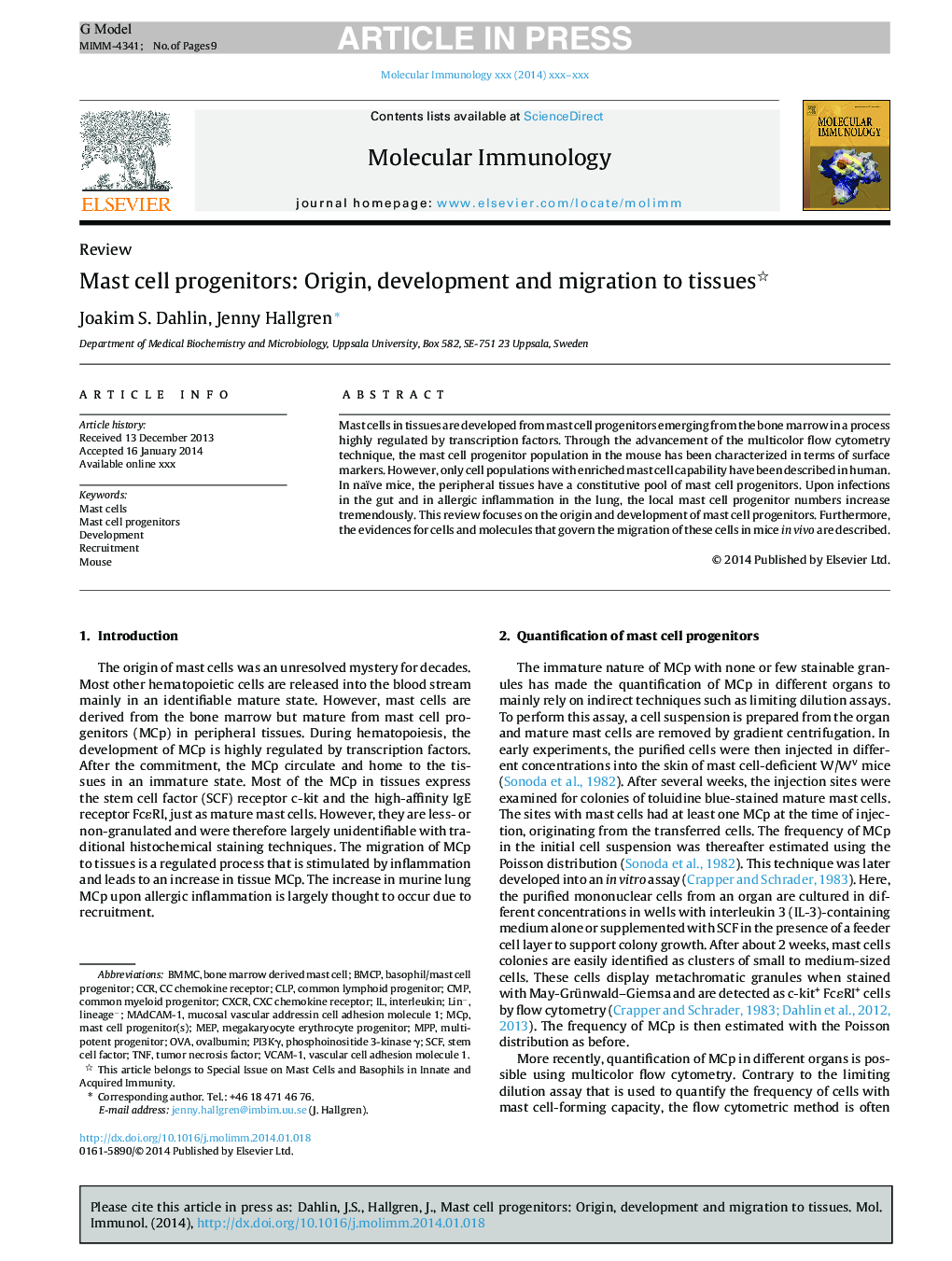| Article ID | Journal | Published Year | Pages | File Type |
|---|---|---|---|---|
| 5916818 | Molecular Immunology | 2015 | 9 Pages |
Abstract
Mast cells in tissues are developed from mast cell progenitors emerging from the bone marrow in a process highly regulated by transcription factors. Through the advancement of the multicolor flow cytometry technique, the mast cell progenitor population in the mouse has been characterized in terms of surface markers. However, only cell populations with enriched mast cell capability have been described in human. In naïve mice, the peripheral tissues have a constitutive pool of mast cell progenitors. Upon infections in the gut and in allergic inflammation in the lung, the local mast cell progenitor numbers increase tremendously. This review focuses on the origin and development of mast cell progenitors. Furthermore, the evidences for cells and molecules that govern the migration of these cells in mice in vivo are described.
Keywords
OVABMMCmucosal vascular addressin cell adhesion molecule 1MAdCAM-1CXCRPI3KγVCAM-1phosphoinositide 3-kinase γSCFCMPCLPMultipotent progenitorMEPMPPCCRMCPTNFLin−RecruitmentOvalbumininterleukinDevelopmentStem Cell Factortumor necrosis factorMast cellsMouseVascular cell adhesion molecule 1common lymphoid progenitorcommon myeloid progenitorCXC chemokine receptorCC chemokine receptor
Related Topics
Life Sciences
Biochemistry, Genetics and Molecular Biology
Molecular Biology
Authors
Joakim S. Dahlin, Jenny Hallgren,
